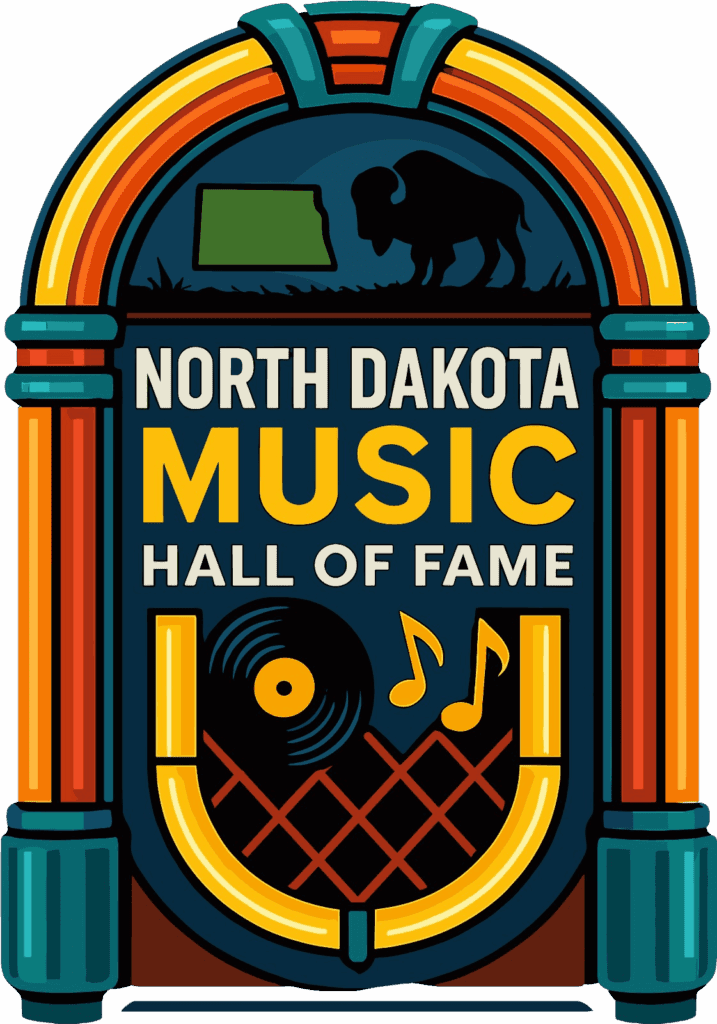The North Dakota Music Hall of Fame proudly inducts Mary Osborne, an extraordinary jazz guitarist whose influential career spanned several decades and left an indelible mark on the world of music. Born in Minot, North Dakota, on July 17, 1921, Osborne’s journey from a small-town musician to a renowned jazz artist is a testament to her talent, dedication, and pioneering spirit.
Early Life and Musical Beginnings
Born into a musical family, Mary Osborne’s direction was set from an early age. “We had a very large family and everybody could play an instrument, but nobody intended to be a musician,” she said in a 1991 New York Times interview. At just 2 or 3 years old, she began picking out tunes on the piano, impressing her father, who then brought her every string instrument he could find. She tried the mandolin and the banjo before settling on the guitar at age 9. As a teenager, she played her acoustic guitar on local radio broadcasts, for which she was paid in Hershey Bars.
Influence of Charlie Christian
At 17, her life changed when pianist Al Trent came to Bismarck, ND, with his electric guitarist, Charlie Christian. Osborne was captivated by Christian’s performance and initially thought his sound was a tenor saxophone until she saw the amp he was using. She was inspired and immediately bought a Gibson ES-150 electric guitar, becoming a devoted follower of Christian’s style. Christian, impressed by their mutual love of Django Reinhardt, took the time to mentor her, inviting her to jam and providing feedback on her playing. They became friends, and Osborne always considered Christian a mentor.
Career in Pittsburgh and New York
In the late 1930s, Osborne moved to Pittsburgh and then to New York. Despite facing barriers due to her gender, her talent could not be ignored. She landed a gig with legendary violinist Joe Venuti, who saw her as a replacement for his late partner Eddie Lang. Before hiring her, Venuti, known for his practical jokes, put her through the wringer, but Osborne proved she was up for the challenge. This opportunity led to work and recordings with jazz greats like Coleman Hawkins, Mary Lou Williams, Ben Webster, Mel Tormé, Clark Terry, Tyree Glenn, Art Tatum, Dizzy Gillespie, Mercer Ellington, and Stuff Smith.
Personal Life and Continued Success
Around this time, Mary met her husband, trumpeter Ralph Scaffidi. They remained in New York, where Mary continued to work, leading her own trio, playing at many NYC hotels, and frequently appearing on radio and television. Between 1955 and 1959, she gave birth to three children. While pregnant with her third child, she recorded her first album, A Girl and Her Guitar. Despite the corny title, this was no novelty record. Mary swung hard, cool, and fast, leading a group that included pianist Tommy Flanagan, bassist Tommy Potter, and drummer “Papa” Jo Jones.
Move to California and Later Career
During the 1960s, Mary Osborne continued to work on the NY scene, even refining her skills by taking classical guitar lessons. In 1968, Mary and Ralph decided to move to Bakersfield, CA, where they started a successful company that made guitars and amplifiers. She continued to perform locally and taught at Cal State University in Bakersfield. She would occasionally surface for recordings and higher-profile gigs. In 1977, she appeared on Marian McPartland’s album Now’s The Time, featuring an all-female group including Vi Redd.
In 1981, Stash Records released Now and Then, which was split between freshly recorded trio tracks and some cuts from A Girl and Her Guitar. The ’81 tracks proved that Mary had not lost a step over the years; in fact, her sound had matured into something uniquely hers.
Final Performances and Legacy
In 1990, she joined Lionel Hampton for a set during the Playboy Jazz Festival, where the 69-year-old Osborne reportedly stole the show. This led to her returning to New York for a week at the Village Vanguard in 1991. Sadly, it would be her last New York gig. Mary Osborne passed away in 1992 from cancer.
Recognition and Induction
Mary Osborne’s induction into the North Dakota Music Hall of Fame celebrates her remarkable contributions to jazz and her pioneering role as a female guitarist in a predominantly male-dominated field. Her story is one of talent, perseverance, and innovation, making her a true icon of North Dakota’s musical heritage. Jim Carlton of Vintage Guitar Magazine beautifully summarizes Osborne’s impact on jazz history: “Osborne’s legacy comprises more than her body of work. Her memory serves as a monument of artistic and personal integrity. Her tenacity and talent manifested into an unusually high degree of artistic development. And she exuded the dignity and courage of one who refused to abide sexism and racism in an era when such attitudes were all too common. She was a cultural and musical pioneer who will forever remain in the pantheon of our greatest jazz artists.”
Mary Osborne was inducted into the North Dakota Music Hall of Fame in 2021
